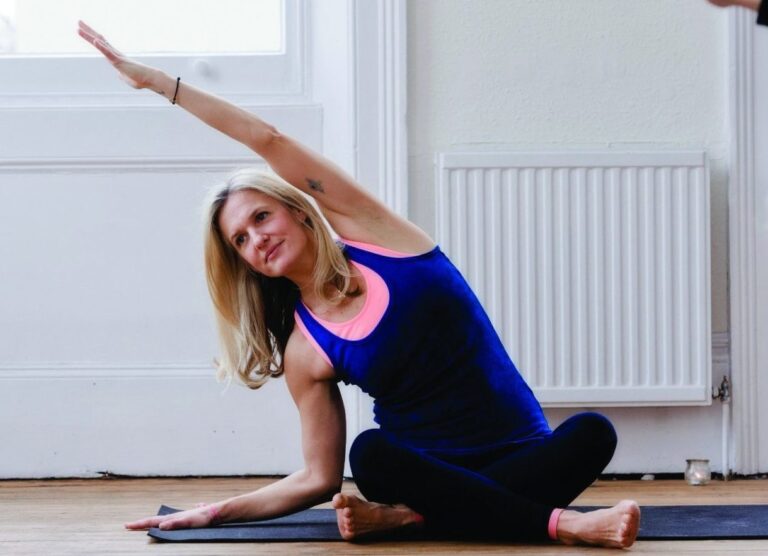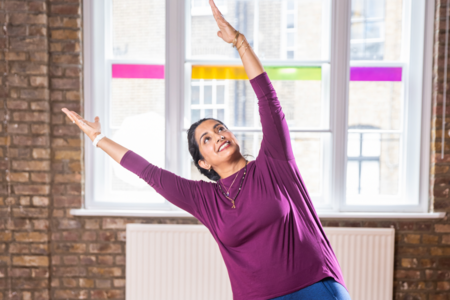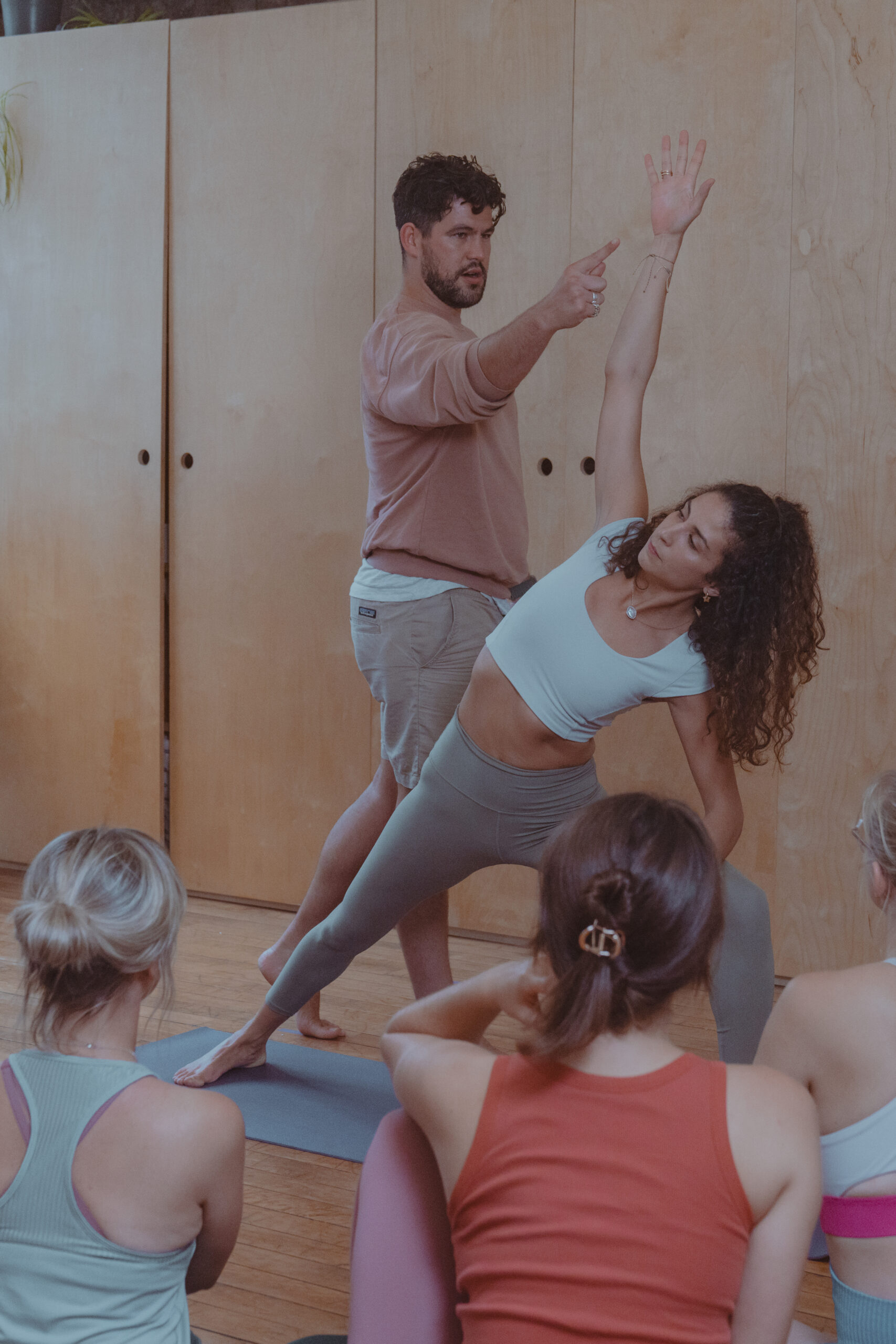If you have been diagnosed with or are being treated for cancer you may wonder how you could possibly attend a yoga class. But there is no need to worry: one of the most wonderful things about yoga is that it has something for everyone. Yoga for cancer classes are taught with sensitivity and respect, and practices are adapted especially for you, to take into account any of the various restrictions cancer may have imposed on you.
We are hearing more and more of the benefits of exercising, and claims that exercise should be a fourth treatment for cancer. According to the NHS “if exercise were a pill, it would be one of the most cost-effective drugs ever invented”. Being active can help with the many side effects of chemotherapy and radiotherapy such as fatigue, muscle loss and weakness. It can also help your body tolerate the treatment better. A study in the British Journal of Oncology 2009 showed that being active after diagnosis of colorectal cancer can improve your chances of survival by around 20-30%.
Having taught yoga for cancer classes since 2013 I see and hear about the benefits of moving and breathing. In trying to spread the word about these free classes, I often say “you don’t need to feel well to come to class, but you will feel better when you leave”.
When people go through treatment for cancer, one of the most frequently reported side effects is huge fatigue. Cancer-related fatigue is different from tiredness, which is usually short term and is alleviated after we stop, sleep or rest. Cancer fatigue doesn’t usually go away with sleep or rest. It can be severe and last a long time. It might feel counterintuitive to exercise when we are feeling exhausted, but starting to build back strength in the muscles makes simple exercises like climbing the stairs or going for a walk easier. The stronger we are, the easier things become and the less fatigued we feel. So even if you feel exhausted, you don’t feel well, joining a class might actually make you feel more energised and less depleted.
A specialist class for people impacted by cancer takes exhaustion, general feelings of being unwell and the practical factors of undergoing treatment into account. Chemotherapy is a cytotoxic drug that can, in some cases, cause burning to small veins, so it is often administered through a plastic tube called a central line (a central blood vessel in the chest close to your heart). A Portacath is a chamber that sits under the skin in the chest at the end of the central line, this may be temporary or permanent. A PICC line is a long flexible tube put into a vein above the elbow and threaded through to the central line. A stoma is where a section of the bowel is brought out through an opening on your abdomen to allow bowel movements to be collected into a pouch. A stoma may be permanent or temporary.
You might have side effects from treatment that range from nausea, medical menopause, peripheral neuropathy, scar tissue, lymphoedema, limited range of motion, or even hand and foot syndrome (when small amounts of chemotherapy drugs leak out of these capillaries affecting the skin on the hands and feet, causing blistering or pain). So you might need a class that can help address some of these treatment-related symptoms and which offers tools to help cope with them. Some of these symptoms are permanent and some are temporary. The physical changes can make the physical body very challenging to be in. My teacher Doug Keller taught me that the real yoga starts when we are dissatisfied or frustrated. We can’t run away from our bodies, but staying and learning to connect more strongly to the physical body can help us start to discover that we are not just a physical body. Once we start to sense that, we open the door to experience wellbeing on other levels.
One of the most empowering tools we have at our disposal is our breath. All living beings breathe. So can we connect more to our breath? Can this help us?
When you hear the words “you have cancer” it literally takes your breath away. When we are scared we hold our breath. Our breathing can become more shallow and we might overuse the accessory breathing muscles, which are designed to work in the short term, meaning that breathing becomes strained and effortful. Yoga reminds us to breathe fully, and can remind us to primarily use the diaphragm to breathe. Diaphragmatic movement massages the thoracic duct that transports our lymph fluid back towards the heart ( the direction we want it to go), so because the lymphatic system is part of the immune system, breathing actually supports the immune system. Breathing fully also calms the nervous system, bringing us into rest and digest” mode. Our digestive, repair and immune systems all function optimally when we are in rest and digest.
When we breathe in we energise the body and when we breathe out we calm the body. We draw in energy or prana when we breathe in, and energy follows awareness. By taking time to slow down and breathing with awareness, we can notice areas of the body where the breath gets stuck, or where feels it is harder to breathe: these can be areas we have guarded or protected or even parts of the body that have overcompensated to help out the rest of the system. We can breathe into these areas and reconnect with our ability to move energy freely around the body. The physical poses in yoga can help release the connective tissue to allow the prana to move around the body. We do physical poses to help keep the prana body functioning.
Breathing also brings us into the present moment. When we are in the present moment, we get a break from our fabulously creative but sometimes scary mind. Our breath gives our mind something to focus on. Like an anchor into the moment, when we watch our breath we can observe our thoughts as they bubble to the surface and then come back to watching the movement of our inhale and our exhale.
Yoga can also give us an alternative way of thinking. To know that happiness and sadness are not necessarily what we think they are, gives us the opportunity to practice Santosha or contentment. To be more content with what we have and what we don’t have allows us then be more comfortable with change.
This multidimensional approach of viewing the body as not just a physical body but as an energetic body and a mental body gives us the opportunity to create an inner environment that prepares the ground for healing. Even if we are unable to move the physical body, we can, through breath, start to stimulate the movement of energy in the body, and we can use the breath to calm the mind.
So if you are nervous about attending a yoga class because of the side- effects of your treatment, be reassured that these free classes will be tailored to your needs. They will guide your body into the best place for it to be nourished and nurtured for healing to take place. They will give you a break from your thoughts and give your mind something else to focus on. If you also bring with you to class a PICC line, a Portacath, a Stoma or any side effect from treatment you will be warmly welcomed by me and a wonderful community of people impacted by cancer.
Enjoy free yoga for cancer on Tuesdays & Thursdays at 11.00am, Wednesdays at 2.00pm and Sunday at 11.15am. Click here to view the yoga for cancer schedule and to book a class.










